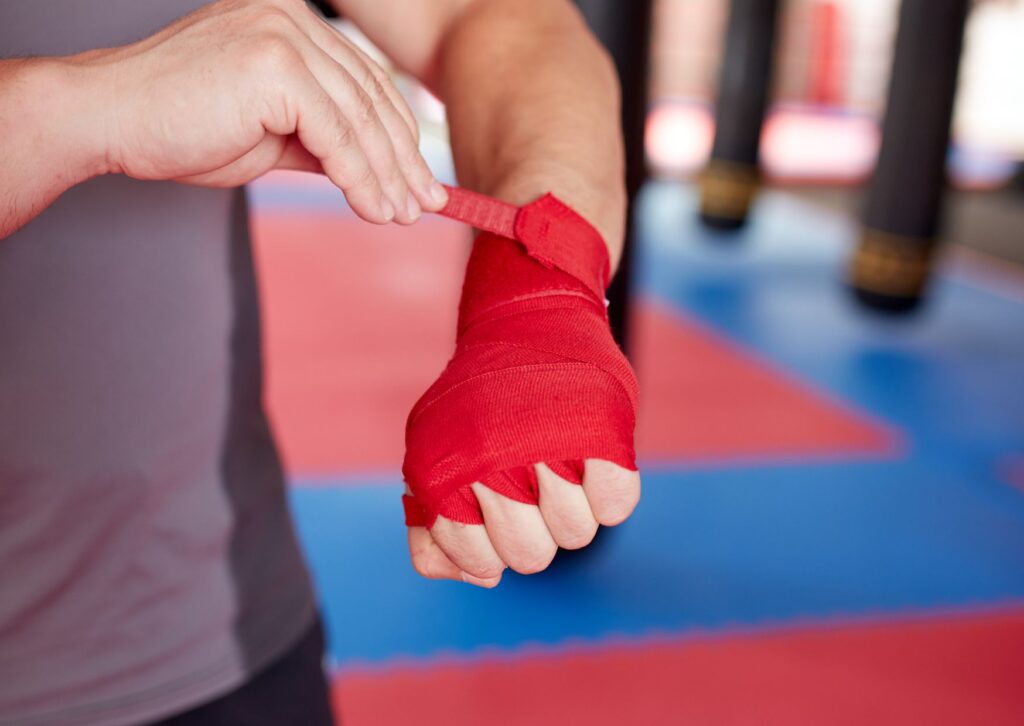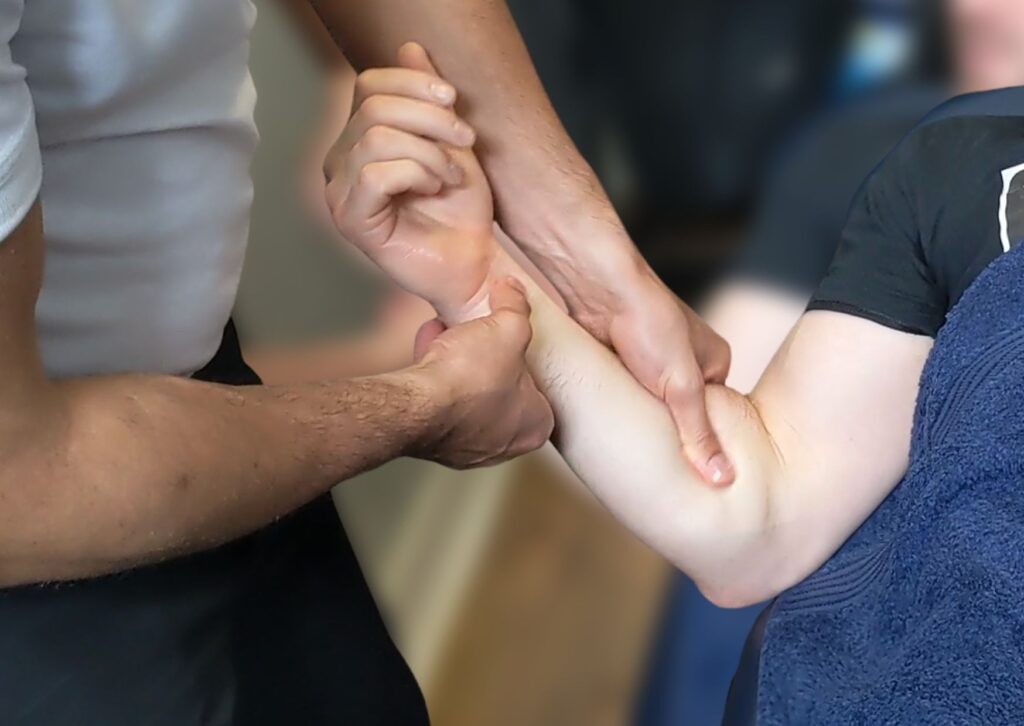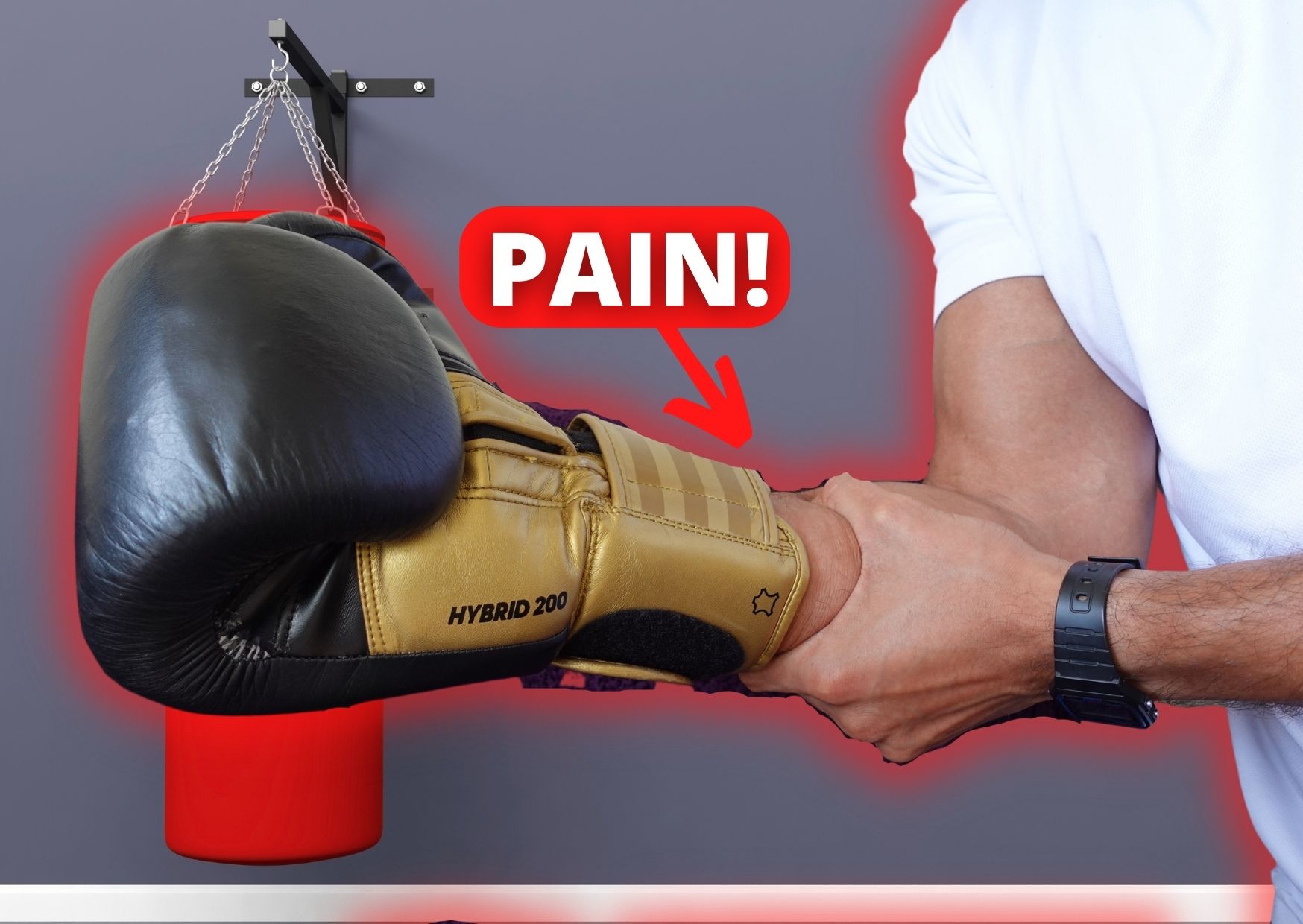Forearm Pain When Boxing? Here’s What To Do!
Boxing is one of the most strenuous sports going and there’s no wonder why so many boxers are injured, often having to get through their boxing matches with injuries.
However, it doesn’t always have to be that way.
When boxing, the forearms take a lot of strain. The repetitive impact of punching bags, hitting pads or sparring with others eventually catches up with you.
If you’re suffering with forearm pain when boxing then it’s important to rest where appropriate.
Here’s a few tips to help.
How to Reduce Forearm Pain When Boxing?
Wear The Correct Equipment
Ensure that you’re always wearing boxing wraps as well as the correct equipment when training.
Boxing wraps help to support the wrist and lower end of the forearm.
If you’re not supporting your wrist then they are more likely to bend or sprain when punching which puts extra pressure on your forearms causing them to hurt.
Longer boxing wraps are usually recommended to ensure the wrist is wrapped enough and supported. These should generally be a minimum of 4.5 metres or 180cm.

Make Sure You Stretch
Stretching after a workout is so important, especially for boxers.
Stretching helps to relieve muscular tension, tightness and aid with recovery.
If you’ve had an intense training session and worked your forearms a lot, then they’ll need to recover.
Stretching is just one of the ways you can help to reduce the tightness that contributes to or causes your pain.
If you’re not sure how to stretch the forearms, check out our article on how to stretch the forearms.

Reduce Muscular Restriction
Boxing can cause a lot of muscular restriction. The repetitive pounding of the bag and taxing workouts can cause our muscle and forearms to be restricted.
This restriction can then lead to pain as well as us not performing to our best ability.
Below are a few ways boxers can reduce the muscular restriction that may be causing their forearm pain.

3 Ways to Reduce Muscular Restriction from Boxing
There are a range of ways we can reduce the muscular restriction that boxing causes.
Seeing a specialist and getting a sports massage is a fantastic method to help rejuvenate your muscles, reduce the muscular tension and reduce the pressure on the forearm.
A sports massage is good for the overall maintenance of your muscles but it can be a great addition to reducing your forearm pain and restriction.
Sports massage helps to break down tension, increase blood flow and restore movement and flexibility.
Seek the advice of a professional sports therapist to see how they can help you best.
- Trigger Point Balls and Foam Rolling
A trigger point ball is a small round ball that can be used to help relieve muscular tension and restriction in a smaller surface area.
A trigger point ball can be used specifically to reduce the forearm tension that you may be experiencing.
See the video below to see how to use one.
Foam rolling on the other hand cand be used to reduce the tension and restriction in a larger surface area.
A foam roller in particular is great to reduce the tension and tightness on the legs.
Boxers have to be on their legs for long periods and although not specifically kicking, this can cause muscular tension and tightness build up.
See the video below to see how a foam roller can be used.
Although this is my least favourite of the three, massage guns can be extremely useful in reducing our muscular restriction.
They’re also very easy to use.
A massage gun helps to pulsate the muscles which aids in recovery, increases blood flow, breaks up scar tissue and improves range of motion.
Using a massage gun on the forearms can help to relieve some of the tension caused by boxing.
When using the massage gun, you shouldn’t aim to apply as much pressure as possible.
The aim is to reduce the tension and increase blood flow, not to brutalise your forearm.
A good massage gun will have a range of intensities ensuring you can apply the right amount of pressure that works for you.
Sore Forearms After Boxing
Boxing is an intense sport and can often leave our muscles feeling sore, tired and exhausted.
It can be completely natural to experience sore forearms after boxing, especially if you haven’t trained in a while or it’s your first time attempting the sport.
This soreness can often be referred to as DOMS. (Delayed Onset Muscle Soreness)
The reason DOMS can happen to your forearms after boxing is because the forearms are working a lot.
The muscles in our forearms help us to clench our fists, and take impact when hitting the bags or pads.
DOMS can happen 24 – 48 hours after exercise and can last anywhere from 1-7 days. For most people DOMS should only last 24-48 hours but the longer you haven’t exercised for, the longer it tends to last.
It’s important that you can distinguish between soreness and pain. If you’re in pain then it’s best to speak to a doctor, physio, sports therapist or even your boxing coach.
Author –
Tyler Lowe – Health & Wellbeing Speaker
BSc Sport & Exercise Rehabilitation


